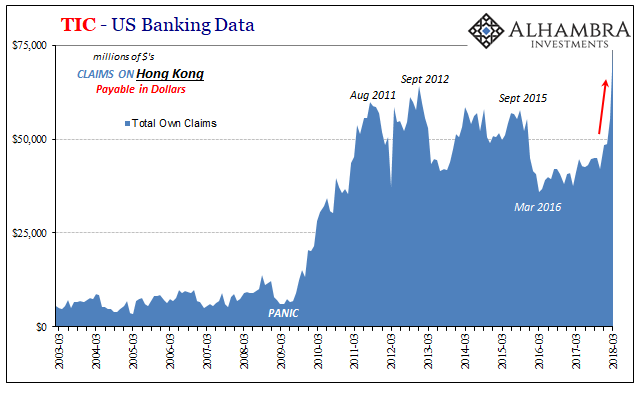When we last left off with the TIC data, the figures showed pretty clearly Japan’s retreat from “dollar†dealing during January and February. Global liquidations occurred during January and February. Therefore, it was reasonable to speculate upon Japanese origins of those liquidations.
That wasn’t the only interesting development revealed by TIC. Over in Hong Kong, there was a surge in “dollar†activity coincident to HKD’s fall. I wrote last month:
Instead, given the almost perfectly mirror-like behavior between CNY and HKD it seems more likely (to me) that Hong Kong banks have been pressed into “dollar†service on behalf of Chinese banks. These latter in eurodollar markets, as noted above, are almost certainly being abjured (charged too much premium) for the greater perceived risks involved (especially with Japan on the retreat from this business). Thus, HK banks borrow the eurodollars at better rates and then some (creative) backdoor channels are opened to funnel them further into the mainland.
If that’s the case, then we should expect to find a substantial enough increase in our proxies for “dollar†activity represented by TIC.
We did. In March 2018 it was even more. A lot more.


CNY wouldn’t register its most recent high until March 26. I think HKMA has its hands full, which is why despite more than a month now HKD remains stuck at 7.85 no matter what authorities have been doing the whole time in between (apart from whatever that was April 19-23).
It doesn’t help that Japanese banks are still withdrawing, if only by a little in March (is that why there were no big liquidations as compared to February?) Nor would it help as it seems Europe’s banking system is perhaps having second thoughts about all this.


Given the way the euro has behaved (almost every currency) since that one point in mid-April, I anticipate finding a clear decline from Europe in the next TIC update.

